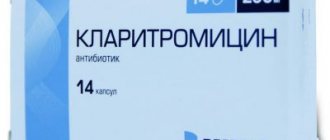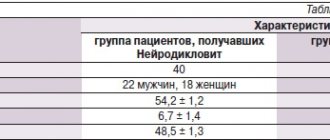Home | About us | Delivery | Advertisers | Login | Registration
Delivery on Sundays and holidays does not work!
- Medicines
- dietary supplementsVitamins
- Categories from A to Z
- Brands from A to Z
- Products from A to Z
- Medical equipment
- beauty
- Child
- Care
- Honey products appointments
- Herbs and herbal teas
- Medical nutrition
- Journey
- Making medicinesStock
Pharmacy online is the best pharmacy in Almaty, delivering medicines to Almaty. An online pharmacy or online pharmacy provides the following types of services: delivery of medicines, medicines to your home. Online pharmacy Almaty or online pharmacy Almaty delivers medicines to your home, as well as home delivery of medicines in Almaty.
my basket
Apteka84.kz is an online pharmacy that offers its customers medicines, medicinal and decorative cosmetics, dietary supplements, vitamins, baby food, intimate products for adults, medical equipment and thousands of other medical and cosmetic products at low prices. All data presented on the Apteka84.kz website is for informational purposes only and is not a substitute for professional medical care. Apteka84.kz strongly recommends that you carefully read the instructions for use contained in each package of medicines and other products. If you currently have any symptoms of the disease, you should seek help from a doctor. You should always tell your doctor or pharmacist about all the medicines you take. If you feel you need further help, please consult your local pharmacist or contact our GP online or by telephone.
© 2022 Pharmacy 84.
Description of the drug VEZOMNI
Solifenacin
After multiple doses, Tmax for solifenacin varied between 4.27 hours and 4.76 hours in different studies, for tamsulosin - between 3.47 hours and 5.65 hours, respectively. Cmax in plasma for solifenacin varied between 26.5 ng/ml and 32.0 ng/ml, for tamsulosin - between 6.56 ng/ml and 13.3 ng/ml. The AUC value for solifenacin varied from 528 ng×h/ml to 601 ng×h/ml, for tamsulosin - between 97.1 ng×h/ml and 222 ng×h/ml. The absolute bioavailability for solifenacin is about 90%, while tamsulosin is absorbed by 70-79%.
After a single dose, T1/2 for solifenacin varies from 49.5 hours to 53 hours, for tamsulosin - from 12.8 hours to 14 hours.
Cmax is reached after 3-8 hours. Tmax is independent of dose. Cmax and AUC increase proportionally with increasing doses from 5 to 40 mg. Absolute bioavailability - 90%. Vd of solifenacin after intravenous administration is approximately 600 l. Solifenacin is largely (about 98%) bound to plasma proteins, predominantly to α1-acid glycoprotein.
Solifenacin is actively metabolized in the liver, mainly by the CYP3A4 isoenzyme. However, there are alternative metabolic pathways through which solifenacin can be metabolized. The systemic clearance of solifenacin is about 9.5 l/h, and the final T1/2 is 45-68 hours. After taking the drug orally, the following metabolites were identified in the plasma past solifenacin:
- one pharmacologically active (4R-hydroxysolifenacin) and three inactive solifenacin N-glucuronide, N-oxide and 4R-hydroxy-N-oxide).
After a single dose of 10 mg 14C-labeled solifenacin administered after 26 days, approximately 70% of the radioactivity was detected in urine and 23% in feces. In urine, approximately 11% of the radioactivity was found as unchanged active substance, about 18% as the N-oxide metabolite, 9% as the 4R-hydroxy-N-oxide metabolite, and 8% as the 4R-hydroxy metabolite (the active metabolite).
Tamsulosin
Tamsulosin is characterized by linear pharmacokinetics. At steady state, Cmax of tamsulosin in plasma is achieved after 4-6 hours. Plasma protein binding is about 99%, Vd is small (about 0.2 l/kg).
Tamsulosin is slowly metabolized in the liver to form less active metabolites. Most of tamsulosin is present in the blood plasma unchanged. Tamsulosin is mainly metabolized in the liver, mainly with the participation of isoenzymes CYP3A4 and CYP2D6.
After a single dose of 0.2 mg 14C-labeled tamsulosin after 1 week, about 76% of radioactivity was detected in urine and 21% in feces. In urine, about 9% of the radioactivity was found as unchanged active substance; about 16% as o-deethylated tamsulosin sulfate, and 8% as o-ethoxyphenoxyacetic acid.
In clinical pharmacology and bioavailability studies, patient ages ranged from 19 to 79 years. After administration, the highest concentrations were found in elderly patients, although there was almost complete agreement with individual values in younger patients. Can be used in elderly patients.
The AUC and Cmax of solifenacin in patients with mild to moderate renal impairment do not differ significantly from the corresponding values in healthy volunteers. In patients with severe renal failure (creatinine clearance ≤30 ml/min), the exposure to solifenacin is significantly higher - the increase in Cmax is about 30%, AUC is more than 100% and T1/2 is more than 60%. A statistically significant relationship was noted between creatinine clearance and clearance of solifenacin.
Vesomni modified release tablets p/o 6mg/0.4mg No. 10x3
Name
Take the tab. with modified luminaire p/capt.ob. 6mg/0.4mg per bl. in pack №10x3
Description
Modified-release, brownish-red, round, biconvex, film-coated tablets, debossed “6/0.4” on one side.
Main active ingredient
solifenacin succinate 6 mg, tamsulosin hydrochloride 0.4 mg. Excipients: mannitol - 83 mg, maltose - 10 mg, magnesium stearate - 2.2 mg, macrogol 7,000,000 - 200 mg, macrogol 8000 - 40 mg. Modified-release, brownish-red, round, biconvex, film-coated tablets, debossed “6/0.4” on one side.
Release form
tab. with modified release, coated film-coated, 6 mg+0.4 mg: 10 or 30 pcs.
special instructions
Before starting treatment with Vesomni, other possible causes of frequent urination (heart failure or kidney disease) should be assessed. If a urinary tract infection is present, appropriate antibacterial treatment should be prescribed. In patients with risk factors for QT prolongation, such as previously established long QT syndrome and hypokalemia, QT prolongation and torsade de pointes were observed when treated with solifenacin succinate. Angioedema with airway obstruction has been reported in some patients treated with solifenacin succinate and tamsulosin. If angioedema occurs, the use of Vesomni should be stopped and not taken further. It is necessary to take appropriate measures and prescribe the necessary treatment. Anaphylactic reactions have been reported in some patients taking solifenacin succinate. If anaphylactic reactions occur, use of Vesomni should be stopped, appropriate measures taken and the necessary treatment prescribed. As with the use of other β1-adrenergic receptor blockers, in some cases, during treatment with tamsulosin, a decrease in blood pressure may occur, which can rarely result in fainting. Patients starting treatment with Vesomni should be warned that they should sit or lie down at the first signs of orthostatic hypotension (dizziness, weakness) until symptoms disappear. Atonic pupil syndrome (IFIS, a variant of constricted pupil syndrome) has been reported in some patients treated with tamsulosin hydrochloride during surgery for cataracts or glaucoma, or in cases of previous treatment with tamsulosin hydrochloride. IFIS syndrome may increase the risk of ophthalmic complications during and after surgery. Therefore, it is not recommended to start treatment with Vesomni in patients scheduled for cataract or glaucoma surgery. Discontinuing the use of Vesomni 2 weeks before surgery for cataracts or glaucoma is theoretically considered positive, but the benefit of stopping treatment has not been reliably established. Preoperatively, the surgeon and ophthalmologist when planning cataract or glaucoma surgery should inquire about the patient's current or past use of Vesomni to ensure appropriate management of the potential occurrence of IFIS during surgery. Vesomni should be used with caution when coadministered with moderate to strong CYP3A4 inhibitors (see INTERACTIONS) and should not be administered in combination with strong CYP3A4 inhibitors, such as ketoconazole, in patients with a reduced CYP2D6 phenotype or in patients taking strong CYP2D6 inhibitors, such as paroxetine. Use during pregnancy and lactation. Vesomni is not indicated for use in women. Fertility. The effect of Vesomni on fertility has not been assessed. Animal studies of solifenacin or tamsulosin have shown no harmful effects on fertility or early embryonic development. Children. The drug is not intended for use in children (under 18 years of age). The ability to influence reaction speed when driving vehicles or working with other mechanisms. No studies have been conducted on the effect of Vesomni on the ability to drive vehicles or operate machines. However, patients should be informed that reactions such as dizziness, blurred vision, fatigue and infrequent drowsiness may occur, which may impair the ability to drive or operate machines (see ADVERSE EFFECTS). With caution (Precautions) Vesomni should be used with caution in patients with severe renal failure, risk of developing urinary retention, gastrointestinal obstructive disorders; the risk of developing decreased gastrointestinal motility, with hiatal hernia/gastroesophageal reflux and/or concomitant use of medications that can cause or aggravate the development of esophagitis (for example, bisphosphonates), with autonomic neuropathy.
pharmachologic effect
Pharmacodynamics. Vesomni is a combination drug containing two active ingredients - solifenacin and tamsulosin. These active substances have independent and complementary mechanisms of action for the treatment of lower urinary tract symptoms (LUTS), benign prostatic hyperplasia (BPH), and symptoms of bladder filling. Solifenacin is a selective competitive antagonist of muscarinic receptors and has no affinity for other receptors, enzymes or ion channels. Solifenacin has a high affinity for muscarinic M3 receptors, and less affinity for muscarinic M1 and M2 receptors. Tamsulosin is a β1-adrenergic receptor blocker. Tamsulosin selectively and competitively binds to postsynaptic β1-adrenergic receptors, especially the β1A and β1D subtypes, which are responsible for relaxing the smooth muscles of the lower urinary tract. Solifenacin relieves symptoms of bladder filling (irritative symptoms) associated with the action of acetylcholine, which activates M3 cholinergic receptors in the bladder. Acetylcholine activates the contractile function of the bladder wall, which manifests itself in the form of an urgent urge to urinate or urinary incontinence. Tamsulosin improves voiding symptoms by increasing the maximum flow rate of urine and reduces the severity of obstruction symptoms by relaxing the smooth muscles of the prostate, bladder neck and urethra. Also improves bladder filling with urine.
Pharmacokinetics
Pharmacokinetics. A repeated dose bioavailability study showed that the pharmacokinetics when using Vesomni are comparable to the pharmacokinetics when taking solifenacin and tamsulosin simultaneously. Suction. After multiple doses of Vesomni, the time to reach Cmax (tmax) for solifenacin varies between 4.27 and 4.76 hours in various studies, for tamsulosin - 3.47–5.65 hours, respectively. Cmax for solifenacin varied between 26.5 and 32.0 ng/ml, for tamsulosin - between 6.56 and 13.3 ng/ml. The AUC values for solifenacin ranged from 528 to 601 ng/h/ml, and for tamsulosin - from 97.1 to 222 ng/h/ml. The bioavailability of solifenacin was approximately 90%, while tamsulosin was absorbed at 70–79% of the administered dose. A study was conducted on the use of Vesomni in a single dose simultaneously with meals, during a low-fat meal, while eating a low-calorie breakfast, and during a high-fat meal and high-calorie breakfast. After a high-fat meal, a high-calorie breakfast, there was a 54% increase in tamsulosin Cmax compared to fasting, which increased the AUC by 33%. The pharmacokinetics of solifenacin are not altered by a low-fat meal, a low-calorie breakfast, or a high-fat meal with a high-calorie breakfast. The simultaneous use of solifenacin and tamsulosin OCAS leads to an increase in Cmax by 1.19 times and an increase in the AUC of tamsulosin by 1.24 times compared to the AUC of tamsulosin OCAS with monotherapy. There are no data on the effect of tamsulosin on the pharmacokinetics of solifenacin. Excretion. After a single dose of Vesomni, T1?2 of solifenacin ranged from 49.5 to 53 hours; tamsulosin - from 12.8 to 14 hours. Repeated use of verapamil at a dose of 240 mg simultaneously with the drug Vesomni leads to an increase in Cmax of solifenacin by 60% and an increase in AUC by 63%, while for tamsulosin Cmax increases to 115% and AUC increases - up to 122%. Changes in Cmax and AUC are not clinically significant. The results of the analysis of pharmacokinetic data during the third phase of clinical trials indicate variability in the pharmacokinetics of tamsulosin depending on age, height and blood concentration of α1-acid glycoprotein. An increase in AUC is associated with increases in α1-acid glycoprotein and age, while a decrease in AUC is associated with a decrease in height. In addition, increased levels of gamma-glutamyl transpeptidase are associated with high AUC values. These changes in AUC values are not clinically significant. Information on the pharmacokinetics of the active ingredients of the combination drug is supplemented by the pharmacokinetic properties of the drug Vesomni. Solifenacin Absorption. The time to reach Cmax (tmax) does not depend on the dose and ranges from 3 to 8 hours after taking several doses. Cmax and AUC values increase in proportion to the dose from 5 to 40 mg. Bioavailability is approximately 90%. Distribution. The volume of distribution of solifenacin after intravenous administration of the drug is about 600 l. Approximately 98% of solifenacin is bound to plasma proteins, primarily to β1-acid glycoprotein. Metabolism. Solifenacin is metabolized slowly and has a low first-pass effect. Solifenacin is extensively metabolized in the liver, mainly with the participation of CYP 3A4. However, there are alternative metabolic pathways that may affect the metabolism of solifenacin. The systemic clearance of solifenacin is approximately 9.5 l/h. After administration, one pharmacologically active metabolite (4R-hydroxysolifenacin) and three inactive metabolites (N-glucuronide, N-oxide and 4R-hydroxy-N-oxide of solifenacin) were determined in the blood plasma (except for solifenacin). Excretion. After a single dose of 10 mg of 14C-labeled solifenacin, approximately 70% of radioactivity was detected in urine and 23% in feces over a period of 26 days. In urine, approximately 11% of the radioactivity was determined unchanged in the form of the active substance, about 18% as the N-oxide metabolite, 9% as the 4R-hydroxy-N-oxide metabolite, and 8% as the 4R-hydroxy metabolite (the active metabolite). Tamsulosin Absorption. For tamsulosin in the OCAS form, tmax ranges from 4 to 6 hours after multiple doses of 0.4 mg/day. Cmax and AUC increase in proportion to the dose from 0.4 to 1.2 mg. Bioavailability is approximately 57%. Distribution. The volume of distribution of tamsulosin after intravenous administration is about 16 liters. Approximately 99% of tamsulosin binds to plasma proteins, primarily β1-acid glycoprotein. Metabolism. Tamsulosin has a low first-pass effect and is metabolized slowly. Tamsulosin is extensively metabolized in the liver, mainly with the participation of CYP 3A4 and CYP 2D6. The systemic clearance of tamsulosin is approximately 2.9 l/h. Most of the tamsulosin used is present in the blood plasma as unchanged active substance. None of the metabolites was more active than the parent substance. Excretion. In the case of a single dose of 0.2 mg of 14C-labeled tamsulosin, after 1 week of treatment, about 76% of the radioactivity is excreted in the urine and 21% in the feces. In urine, approximately 9% of radioactivity was detected unchanged in the form of the active substance, about 16% in the form of o-diethylated tamsulosin sulfate and 8% as o-ethoxyphenoxyacetic acid.
Indications for use
- Treatment of moderate to severe filling symptoms (irritative symptoms) (urinary urgency, frequency) and voiding symptoms (obstructive symptoms) associated with benign prostatic hyperplasia in men.
Directions for use and doses
Adults over 18 years of age, as well as elderly patients Orally, 1 tablet. 1 time/day, regardless of meals. The tablet must be taken whole; it cannot be chewed, because this may affect the sustained release of the active substance.
Contraindications
- hypersensitivity to the active substances or any of the excipients;
- hemodialysis;
- severe liver failure;
- severe renal failure or moderate liver failure during simultaneous treatment with strong inhibitors of the CYP3A4 isoenzyme, for example, ketoconazole;
- the presence of severe gastrointestinal diseases (including toxic megacolon), myasthenia gravis and closed-angle glaucoma;
- orthostatic hypotension;
- children under 18 years of age (lack of data on effectiveness and safety).
With caution Vesomni should be prescribed with caution to patients with:
- severe renal failure;
- risk of urinary retention;
- gastrointestinal obstructive diseases;
- risk of decreased gastrointestinal motility;
- with hiatal hernia, gastroesophageal reflux and patients concomitantly taking medications (for example, bisphosphopathics) that can cause or worsen esophagitis;
- with autonomic neuropathy;
- in patients with risk factors such as long QT syndrome and hypokalemia, prolongation of the QT interval and torsade de pointes (TdP) were observed.
An anaphylactic reaction has been reported in some patients treated with solifenacin after drug approval. If anaphylactic reactions develop, treatment with Vesomni should be discontinued and appropriate treatment should be administered. As with the use of other alpha1-blockers, during treatment with tamsulosin, in some cases a decrease in blood pressure may be observed, which in rare cases can lead to fainting. At the first signs of orthostatic hypotension (dizziness, weakness), the patient should sit or lie down and remain in this position until the signs disappear. Some patients taking or previously taking tamsulosin hydrochloride during surgery for cataracts and glaucoma have developed intraoperative iris instability syndrome (narrow pupil syndrome), which can lead to complications during surgery or in the postoperative period. It is not recommended to initiate Vesomni therapy in patients scheduled for cataract or glaucoma surgery. The advisability of discontinuing Vesomni therapy 1-2 weeks before surgery for cataracts or glaucoma has not yet been proven. During the preoperative examination of patients, the surgeon and ophthalmologist should consider whether the patient is taking or has taken Vesomni. This is necessary to prepare for the possibility of developing intraoperative iris instability syndrome during surgery. Vesomni should be used with caution in combination with strong and moderate CYP3A4 inhibitors, for example, verapamil, ketoconazole, ritonavir, nelfinavir, itraconazole. The drug should not be used in patients with impaired metabolism of the CYP2D6 isoenzyme in combination with strong CYP3A4 inhibitors or strong CYP2D6 inhibitors, for example, paroxetine. Patients with renal insufficiency Vesomni can be used in patients with mild to moderate renal insufficiency, but should be used with caution in patients with severe renal insufficiency. Patients with hepatic insufficiency Vesomni can be used in patients with mild hepatic insufficiency (Child-Pugh score ? 7). Patients with moderate liver failure (7-9 points on the Child-Pugh scale) should take the drug with caution. In patients with severe liver failure (Child-Pugh score above 9), the use of Vesomni is contraindicated.
Compound
solifenacin succinate 6 mg tamsulosin hydrochloride 0.4 mg * each bilayer tablet contains one layer of solifenacin succinate (6 mg) and one layer of tamsulosin hydrochloride (0.4 mg). Excipients: mannitol - 83 mg, maltose - 10 mg, magnesium stearate - 2.2 mg, macrogol 7,000,000 - 200 mg, macrogol 8000 - 40 mg.
Interaction with other drugs
interactions with inhibitors of CYP 3A4 and 2D6. Co-administration of solifenacin and ketoconazole (a strong CYP3A4 inhibitor) at a dose of 200 mg/day resulted in a 1.4- and 2.0-fold increase in the Cmax and AUC of solifenacin, while ketoconazole at a dose of 400 mg/day resulted in a 1.5-fold increase. - and a 2.8-fold increase in Cmax and AUC of solifenacin. With simultaneous use of tamsulosin with ketoconazole at a dose of 400 mg/day, a 2.2- and 2.8-fold increase in Cmax and AUC of tamsulosin was observed, respectively. When tamsulosin was co-administered with cimetidine, a weak CYP3A4 inhibitor (400 mg every 6 hours), there was a 1.44-fold increase in tamsulosin AUC, while Cmax did not change significantly. Vesomni can be used concomitantly with weak CYP3A4 inhibitors. Concomitant use of tamsulosin with paroxetine, a strong CYP 2D6 inhibitor (20 mg/day) resulted in a 1.3- and 1.6-fold increase in Cmax and an increase in tamsulosin AUC, respectively. Vesomni can be used concomitantly with CYP2D6 inhibitors. The influence of induction enzymes on the pharmacokinetic properties of solifenacin and tamsulosin has not been studied. Since solifenacin and tamsulosin are metabolized by CYP 3A4, pharmacokinetic interactions with CYP 3A4 inducers (for example, rifampicin) are possible, which may reduce the plasma concentrations of solifenacin and tamsulosin.
Overdose
symptoms. Overdose when using a combination of solifenacin and tamsulosin can potentially lead to a severe anticholinergic effect with the development of acute arterial hypotension. The high doses taken incidentally during clinical trials were 126 mg solifenacin succinate and 5.6 mg tamsulosin hydrochloride. These doses were well tolerated, with moderate dryness of the oral mucosa reported when taken for 16 days of treatment. Treatment. In case of overdose of solifenacin and tamsulosin, the patient should take activated charcoal. Gastric lavage may be effective during the first hour after taking the drug, but do not induce vomiting. Symptoms of an overdose of solifenacin, like other anticholinergic drugs, can be eliminated as follows: severe anticholinergic effects on the central nervous system, hallucinations or other severe disturbances: treatment with physostigmine or carbachol; convulsions or severe excitability: treatment with benzodiazepines; respiratory failure: treatment with mechanical ventilation; tachycardia: symptomatic treatment, if necessary; β-adrenergic blockers should be used with caution, since concomitant overdose with tamsulosin can potentially cause severe hypotension; urinary retention: catheterization. As with other antimuscarinics, in case of overdose, special attention should be paid to patients with an established risk of developing QT prolongation (eg, hypokalemia, bradycardia, and concomitant use of drugs that can prolong the QT interval) and related pre-existing conditions. heart diseases (eg myocardial ischemia, arrhythmia, heart failure). In case of acute hypotension, which is possible with an overdose of tamsulosin, symptomatic treatment is required. Since tamsulosin binds very well to proteins in the blood plasma, hemodialysis is ineffective.
Side effect
Vesomni may cause mild to moderate anticholinergic adverse reactions. The most common adverse reactions were dry mouth (9.5%), constipation (3.2%), and dyspepsia (including abdominal pain, 2.4%). Other adverse reactions commonly reported included dizziness (1.4%), blurred vision (1.2%), fatigue (1.2%), and ejaculatory dysfunction (including retrograde ejaculation, 1.5%). A serious adverse reaction observed during treatment with Vesomni in clinical trials was acute urinary retention (0.3%, uncommon). The frequency of adverse reactions is determined as follows: very often (? 1/10); often (?1/100 to
Storage conditions
At a temperature not exceeding 30 °C. Keep out of the reach of children.
Expiration date from date of manufacture
3 years



